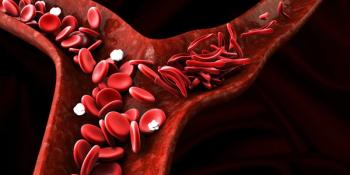
Oxygen-Sensing Molecule May Lower Inflammation in Autoimmune Diseases
Targeting an energy-related molecule could prevent the onset of autoimmune diseases.
Inflammation requires energy, but for autoimmune diseases characterized by a high level of inflammation, a significant amount of energy is needed. A substantial provider of this energy is oxygen.
Although oxygen is crucial for cell survival, it was also discovered to play a significant role in the inflammatory process, according to findings from a study published by Nature Communications.
The study authors found that the body is able to trick immune cells into thinking they lack oxygen. This process then causes inflammation to resolve due to a reduction in energy supply, according to the study.
These findings may represent a step towards novel treatment strategies for autoimmune diseases such as multiple sclerosis and
The authors said that oxygen levels are closely monitored by sensors that measure the concentration of the molecule in cells. Whenever oxygen levels fall due to less availability or more consumption of the molecule, the sensors are activated and trigger a cascade of events.
Specifically, the most crucial oxygen sensor in this process is the hypoxia-inducible factor (HIF) protein, according to the study.
“We identified HIF-1α as a critical transcriptional factor involved in IL-10 production by B cells, thereby influencing the course of T cell-mediated autoimmune diseases,” the authors wrote.
In the study, the authors found that increased activation of HIF-1α in immune cells reduced inflammatory response. This finding suggests that the molecular mechanism may prevent individuals from developing serious inflammatory conditions by keeping B-lymphocytes in check.
Under high levels of HIF, B-lymphocytes produced interleukin 10, which blocked the inflammatory process, according to the study.
Typically, these immune cells play a role in an excessive immune response; however, activating HIF resulted in an opposite response, according to the authors.
To further test this response, the authors turned off HIF in B-lymphocytes in mice models. The lack of the oxygen sensor prevented inflammation resolution and caused the animals to develop chronic inflammatory conditions, such as arthritis and brain inflammation, according to the study.
These findings suggest a novel molecular strategy that could prevent or treat lifelong inflammatory diseases.
“Therapeutically, fostering of HIF-1α expression may provide a tool to increase IL-10-producing B cells and limit autoimmune diseases,” the authors wrote.
Newsletter
Stay informed on drug updates, treatment guidelines, and pharmacy practice trends—subscribe to Pharmacy Times for weekly clinical insights.






















































































































































































































